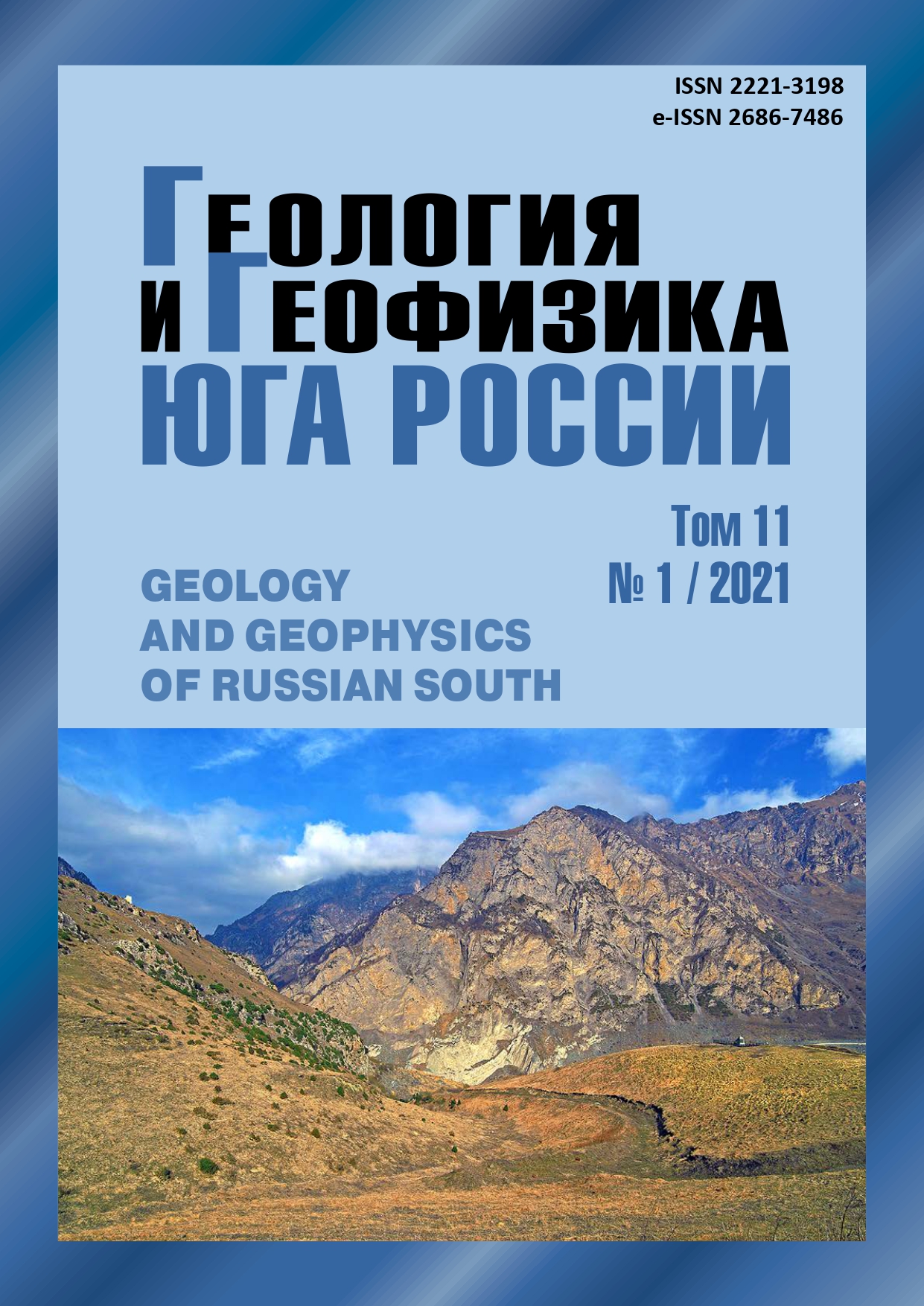Analysis of geological-geophysical materials and qualitative assessment of the oil and gas perspectives of the Yuzhno-Kharbizhinsky area (Northern Caucasus)
Abstract
Relevance. At the present stage, the development of the oil industry of the Russian Federation is impossible without replenishing the resource base, and therefore an urgent task is to search for new methods for assessing and analyzing the oil and gas content of promising areas. Aim. Analysis of the reservoir-filtration properties of reservoir rocks of the Kama horizon within the Yuzhno-Kharbizhinsky area, in order to predict the reservoir-filtration parameters for the Vostochny area. Methods. To analyze the reservoir-filtration and geological-geophysical parameters of the reservoir rocks of the Kuma suite of the Yuzhno-Kharbizhinsky area, graphs of the variability of the reservoir-filtration and geologicalgeophysical parameters were constructed and their correlation analysis was carried out. For this, well logging data and data from laboratory studies of reservoirs obtained during drilling of well No. 88-RD were used. The estimation of the porosity coefficient, bulk density, mineralogical density and saturation density of rocks were determined at the stage of assessing deposits according to the methods of A.M. Nechaya and B.Yu. Wendelstein, N.V. Mancheva, based on a comprehensive interpretation of BK (BKZ) - NGK and BK (BKZ) - NGK - PS. Results. The following pairs of parameters have a significant positive correlation: porosity coefficient and resistivity of rocks, porosity coefficient and relative resistivity of rocks, porosity coefficient and bulk density, porosity coefficient and mineralogical density, porosity coefficient and density of saturated rocks, rock resistivity and relative rock resistance, rock resistivity and bulk density, rock resistivity and mineralogical density, rock resistivity and saturated rock density, rock relative resistivity and bulk density, rock relative resistivity and mineralogical density, rock relative resistivity and saturated rock density, bulk density and mineralogical density, bulk density and density of saturated rocks, mineralogical density and density of saturated rocks.A dependence of porosity on resistance is observed, which indicates the presence of hydrocarbons in the reservoir rocks, i.e. with an increase in porosity, resistance increases, which is also observed in the graphs.Having studied the distribution of indicators in the Yuzhno-Kharbizhinsky area along one horizon, it can be concluded that these indicators differ very slightly, which indicates the homogeneity of the reservoir properties. Qualitative indicators remain unchanged. Similar performance can be expected in the Eastern section. The presence of industrial accumulations of hydrocarbon raw materials is assessed as highly probable.


